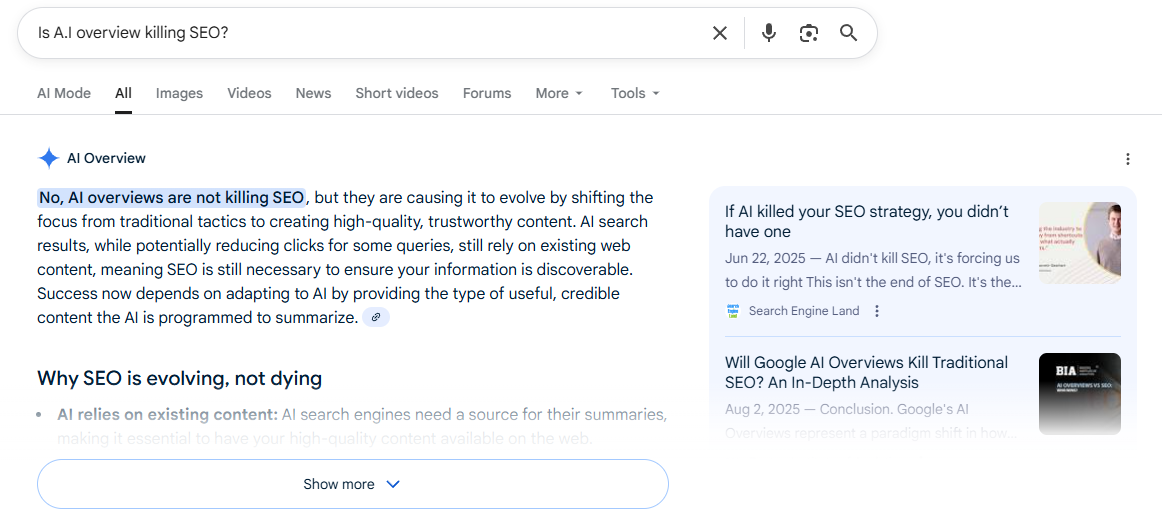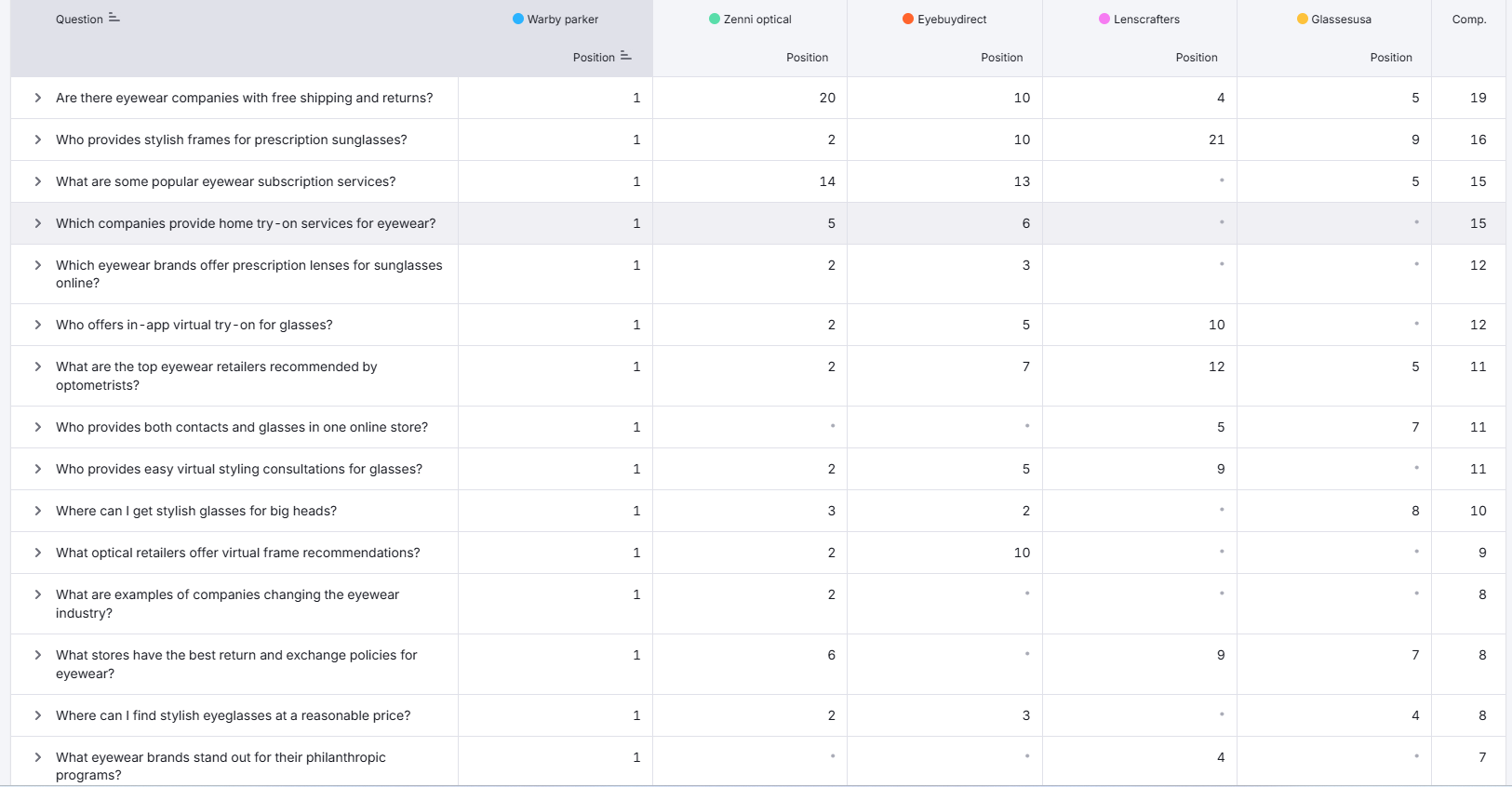Search engines aren’t what they used to be. Between AI Overviews, ChatGPT, and Perplexity, people are getting their answers without going to a single website.

Why read this blog?
From this blog you will:
What is GEO (Generative Engine Optimization)
GEO focuses on making your content readable and retrievable by AI tools, not just by search engines. Instead of chasing keywords, we’re making sure your content can be pulled directly into the answers users get from tools like ChatGPT and Google’s AI Overviews.
As these platforms become how people “search,” we’re seeing many try to adapt to these platforms. A few common strategies we’ve seen:
- Reworking blogs to be more conversational
- Writing “prompt-friendly” articles
- Getting mentions in reddit threads, forums, and industry blogs
- Creating How-to guides
And then of course our strategy of choice a GEO optimized Frequently Asked Questions (FAQs).
Why focus on FAQs
Our focus on creating GEO optimized FAQ pages comes from a comprehensive study that talks about how to benchmark and measure GEO success as well as the methods that they see are most helpful.
They found that the biggest visibility boosts came from (if you’re curious):
- Adding quotations or cited sources +30–40% visibility
- Adding statistics or factual data +30–40%
- Improving fluency and readability +15–30%
- Making content easier to understand +15–30%
What the study found is that traditional SEO tricks aren’t helping; what helps is structured, factual, concise, and well-cited information — i.e., content that looks like how an AI model writes and reads.
So why do FAQs work so well?
1. They’re naturally structured
Generative engines extract answers by matching question/answer patterns.
Each FAQ entry is a self-contained “mini answer” exactly the kind of text GEO models identify and cite.
2. They’re concise and human-readable.
The study’s “Fluency Optimization” and “Easy-to-Understand” methods both boosted visibility. Good FAQ writing (short, plain-language answers with minimal fluff) checks that box by default.
3. They lend themselves to statistics, quotes, and citations.
You can easily integrate numbers (“40% faster”), attributions (“According to…”), or source links.
4. They allow Schema markup.
Schema is the language that translates human-readable pages into machine-understandable data. Adding FAQ schema lets AI engines parse content structure more easily. That’s like adding a “map” for the model to find and reuse your answers.
5. They’re scalable and low-effort.
The study highlights “lightweight” GEO methods that don’t require full rewrites. FAQ pages fit that perfectly, you can optimize in place without redoing your entire content strategy. This is really a major reason for FAQs over a how-to hub: they’re agile. You can publish answers as soon as new questions emerge and continuously expand your content Quickly!
How we’re building FAQ pages in WordPress for our clients
Our approach isn’t just about writing Q&A content, it’s about structuring it for both humans and generative engines. Every FAQ page we build follows a process that blends good UX, content strategy, and technical implementation.
1. Build it on a real system not just a block.
We use a dedicated FAQ system instead of just individual pieces of page content (In WordPress that would be an FAQ post type instead of just Gutenberg blocks). That means every question and answer lives in one place, can be reused across the site, and supports proper schema markup automatically. It also allows for centralized updates edit once, update everywhere.
2. Write real, high-quality, questions.
We start with questions that actually come from users not hypotheticals. We first talk to our client because they know best the questions that are commonly asked. Then we use Semrush’s A.I toolkit to gather a comprehensive list of real questions users are asking tools like ChatGPT and Perplexity related to your business.
What that report looks like:

3. Write clear, answer-first, responses.
We provide a comprehensive writing guide tailored to our clients business. If you want an example of a general one we have one for you:
4. Embed FAQs across the site.
We don’t limit them to a single “FAQ page.” We set-up and strongly encourage the FAQs to integrate into product pages, blog posts, and service areas, wherever they naturally fit. This helps search engines and generative engines connect context across your entire site.
5. Implement schema markup correctly.
As stated before schema markup is structured data added to your site’s code that helps search engines and AI tools understand your content. We use FAQPage Schema through Yoast SEO so every question and answer pair is machine-readable and eligible for display in AI-generated answers.
(We’ve even confirmed accordion-based FAQs still get indexed — as long as they’re visible in the HTML at load.)
6. Measure visibility over time.
We benchmark each client’s visibility across platforms like Google AI Overviews, ChatGPT, Perplexity, and Bing Copilot using Semrush’s A.I toolkit. Then we measure A.I visibility as well as, any changes in traffic.
Do you want to talk about GEO?
Whether you want your own GEO optimized FAQ page or if you just want to talk with us about your thoughts on GEO, please reach out!
We recognize that GEO is new, and strategies, best practices, and everything surrounding GEO will be changing as new studies, case studies and platforms change.
So please reach out and let’s join the conversation and help pioneer this revolution in A.I.